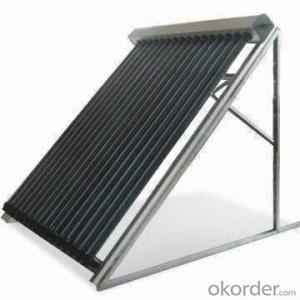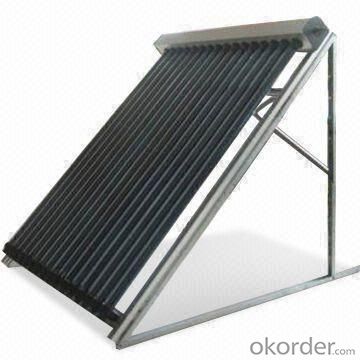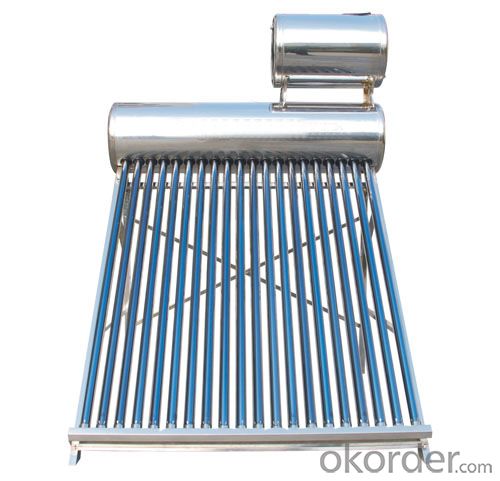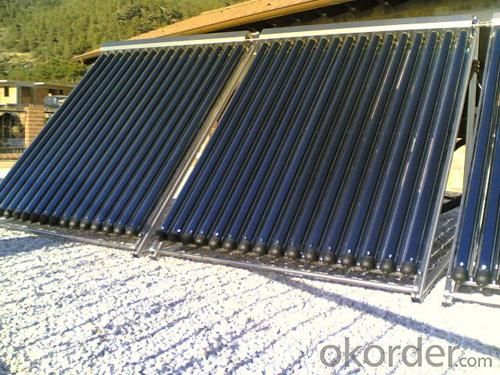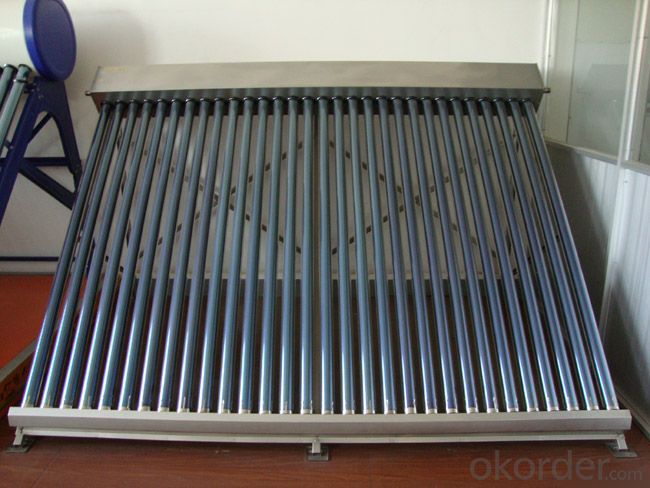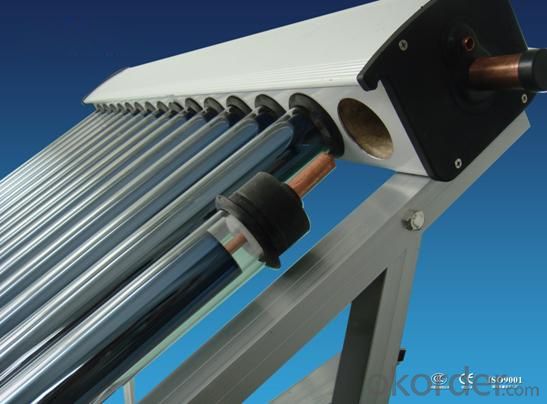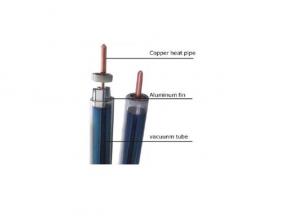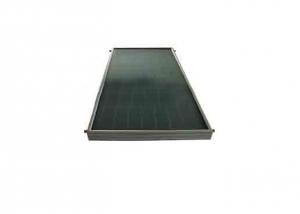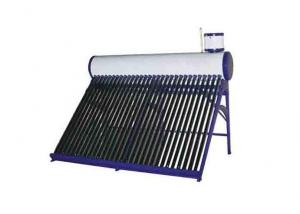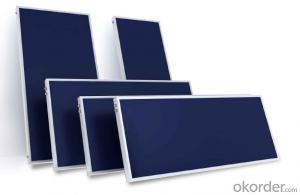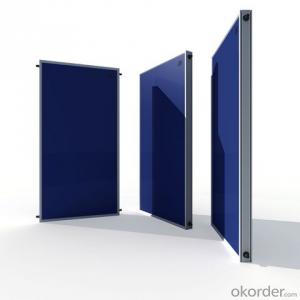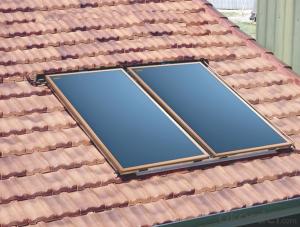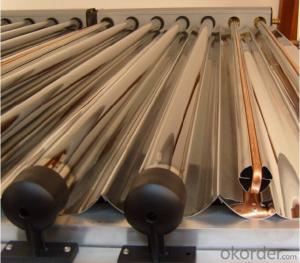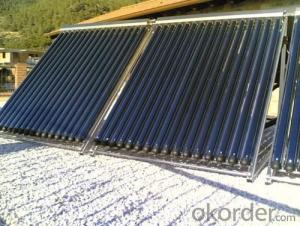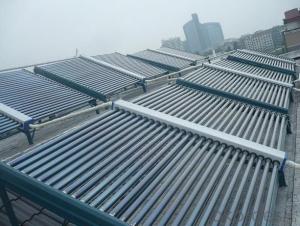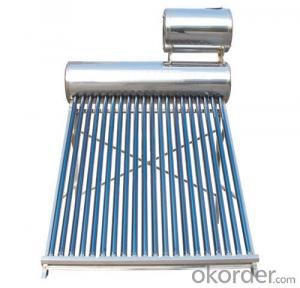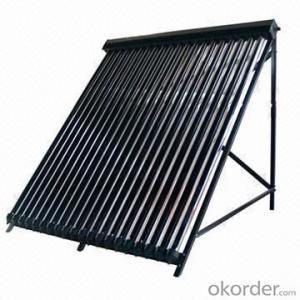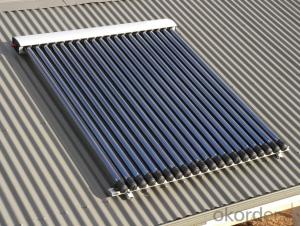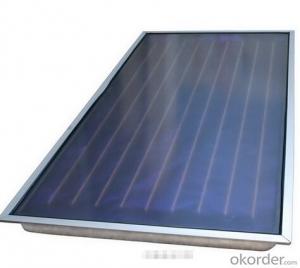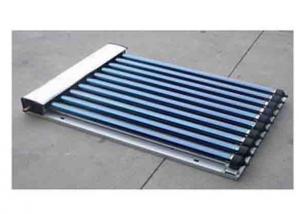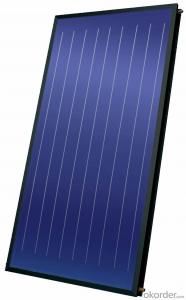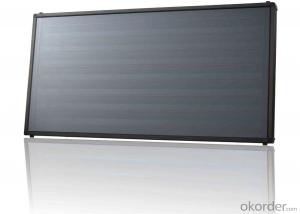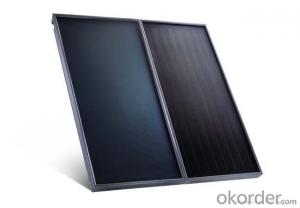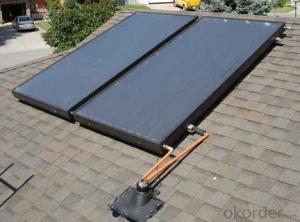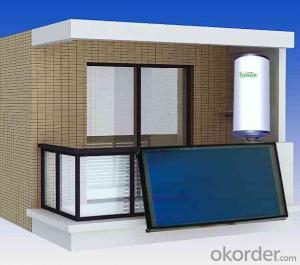Buy 12 Tubes Solar Pipes Solar Collectors with High Efficiency
- Loading Port:
- China main port
- Payment Terms:
- TT OR LC
- Min Order Qty:
- 5 set
- Supply Capability:
- 10000 set/month
OKorder Service Pledge
OKorder Financial Service
You Might Also Like
Specification
manifold (inner) | red copper |
manifold (exterior) | aluminum alloy |
glass tube dimensions | 58mm * 1800mm |
daily efficiency | ≥55% |
heat preservation | 72 hours |
hail resistance | 25mm |
max pressure | 7 bar |
coating of vacuum tube | ALN/AIN-SS/CU |
heat pipe | anti-freezing > -35 degree |
certificate | Solar Keymark, EN12975,SRCC |
Serious Product
Models | L*W*H mm | Vacuum tube | Power output | Efficiency | Header mm | Frame | container loading 20FT/40HQ sets | Gross Weight kg |
SHC-8 | 1917*910*133 | 58*1800*8pcs | 939W | 0.668 | Φ35/1.0 | AL alloy | 185/445 | 27 |
SHC-10 | 1917*1130*133 | 58*1800*10pcs | 1189W | 159/385 | 33 | |||
SHC-12 | 1917*1350*133 | 58*1800*12pcs | 1440W | 149/358 | 40 | |||
SHC-15 | 1917*1680*133 | 58*1800*15pcs | 1815W | 120/290 | 49 | |||
SHC-18 | 1917*2010*133 | 58*1800*18pcs | 2191W | 100/242 | 59 | |||
SHC-20 | 1917*2230*133 | 58*1800*20pcs | 2442W | 87/210 | 66 | |||
SHC-22 | 1917*2450*133 | 58*1800*22pcs | 2692W | 83/202 | 72 | |||
SHC-24 | 1917*2670*133 | 58*1800*24pcs | 2943W | 77/188 | 79 |
Packaging & Delivery
Packaging Details: | Exporting Carton with big foaming protection |
Delivery Detail: | In 10-15 days |
Loading Quantity
Model | Tube | Tube Q.T.Y | Loading Q.T.Y/40HQ |
GSC15 | 58*1800mm | 15pcs | 315sets |
GSC18 | 58*1800mm | 18pcs | 265sets |
GSC20 | 58*1800mm | 20pcs | 248sets |
GSC22 | 58*1800mm | 22pcs | 225sets |
GSC25 | 58*1800mm | 25pcs | 200sets |
GSC30 | 58*1800mm | 30pcs | 168sets |
Details of solar collector:
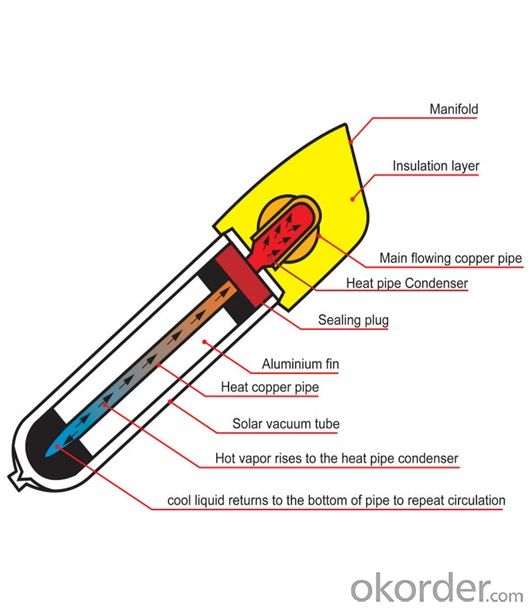
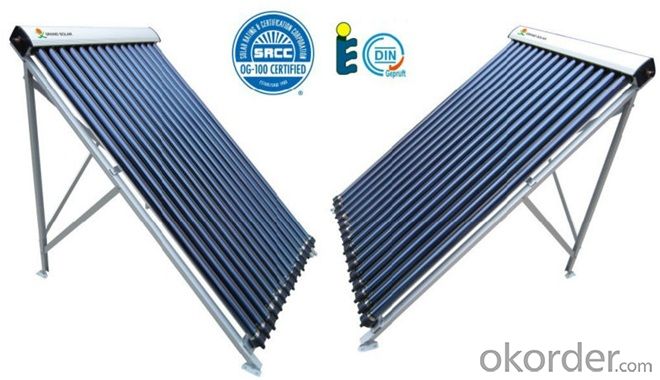
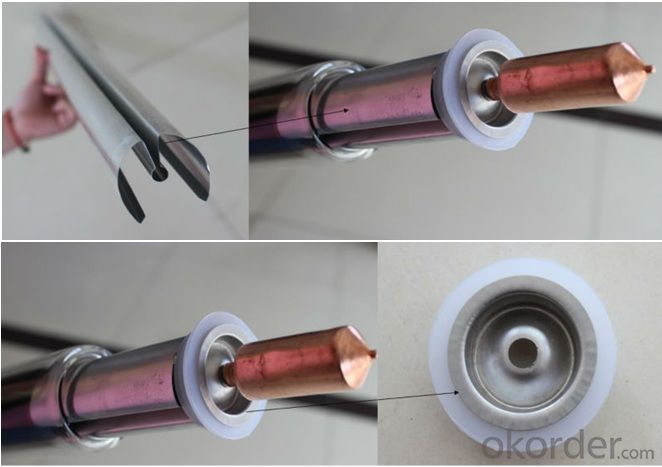
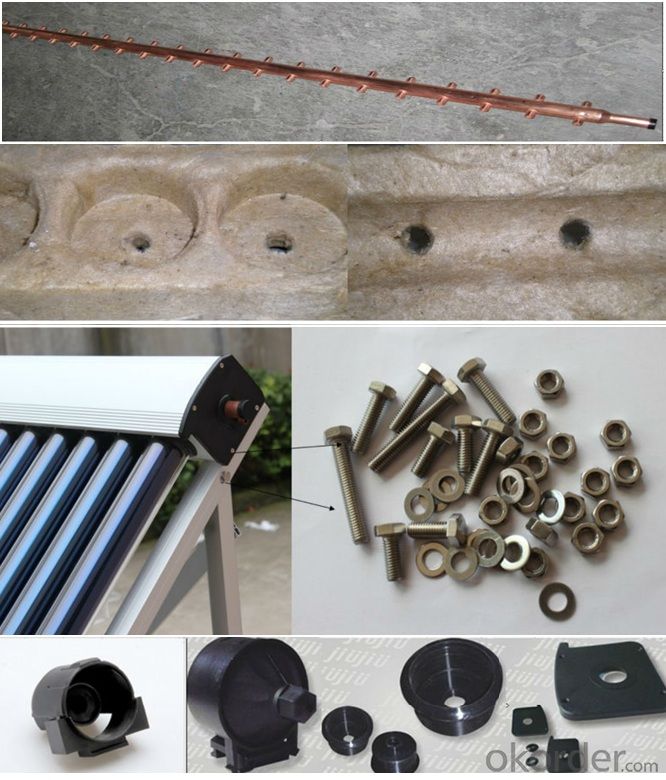
- Q: How do solar collectors affect the environment?
- Harnessing the sun's energy, solar collectors contribute positively to the environment by generating electricity or heat without emitting harmful pollutants or greenhouse gases. This utilization of renewable energy helps decrease our reliance on fossil fuels, which are major contributors to air pollution and climate change. Moreover, solar collectors have a limited impact on land usage. They can be easily installed on rooftops, avoiding the need for additional land or disruption of natural ecosystems. Furthermore, these collectors can be integrated into existing infrastructures, such as parking lots or agricultural fields, optimizing their efficiency and minimizing adverse effects on the environment. Conservation of water is also a significant aspect. Conventional power generation methods like coal or natural gas consume substantial amounts of water for cooling purposes. Conversely, solar collectors operate without the need for water, therefore preserving this valuable resource. It is true that the production of solar collectors does have some environmental implications, particularly regarding the mining and manufacturing processes required for the necessary materials. However, these impacts are relatively minimal when compared to the long-term benefits of solar energy utilization. Overall, solar collectors make a positive impact on the environment by reducing greenhouse gas emissions, conserving water, and minimizing land usage. They play a critical role in the transition towards a more sustainable and clean energy future.
- Q: Do solar collectors require direct sunlight to operate?
- Yes, solar collectors do require direct sunlight to operate efficiently. While they can still generate some energy on cloudy or overcast days, direct sunlight provides the optimal conditions for maximum energy production.
- Q: Can solar collectors be used for heating correctional facilities?
- Yes, solar collectors can be used for heating correctional facilities. Solar thermal systems can effectively generate hot water or provide space heating for correctional facilities by harnessing the sun's energy. This not only helps reduce operating costs but also promotes sustainability and decreases reliance on fossil fuels. Additionally, implementing solar collectors can contribute to the overall environmental goals of correctional facilities.
- Q: Can solar collectors be used in remote areas?
- Yes, solar collectors can be used in remote areas. They are particularly suitable for remote areas where access to electricity is limited or nonexistent. Solar collectors can provide a reliable and sustainable source of energy by harnessing sunlight, making them an ideal solution to meet the energy needs of remote communities or installations.
- Q: How do solar collectors affect the energy consumption of a building?
- Solar collectors can significantly reduce the energy consumption of a building by harnessing the power of sunlight and converting it into usable energy. By capturing solar radiation, these collectors can produce heat or electricity, which can then be used to supplement or replace traditional energy sources. This helps to decrease dependence on fossil fuels and lowers the overall energy consumption of the building, resulting in reduced utility bills and a more sustainable energy footprint.
- Q: Are there any restrictions or regulations for installing solar collectors in certain areas?
- In certain areas, it is possible to encounter restrictions or regulations when it comes to the installation of solar collectors. These restrictions can differ based on the regulations and local government in place. Some common limitations include zoning laws, building codes, and rules set by homeowner associations. For instance, zoning laws might stipulate where solar collectors can be placed, including setbacks from property lines or height limitations. Building codes may demand specific permits or inspections to ensure the safety and structural integrity of solar collector installations. Homeowner associations could also have their own regulations pertaining to the visual appeal and positioning of solar collectors. Furthermore, certain regions might have unique regulations in place for historic districts or protected landscapes, which could limit the installation of solar collectors. Therefore, it is crucial for individuals or businesses interested in installing solar collectors to conduct thorough research and grasp the specific restrictions or regulations applicable to their area prior to proceeding with the installation process.
- Q: Can solar collectors be used in combination with greenhouses or indoor farming systems?
- Solar collectors, such as photovoltaic panels or solar thermal collectors, have the potential to be utilized alongside greenhouses or indoor farming systems. They offer a renewable energy source that can power various systems within these setups. Within greenhouses, solar collectors can generate electricity for different purposes. They can provide power for lighting, heating, ventilation, and irrigation systems. The electricity produced can ensure plants receive adequate artificial lighting during periods of low natural light, creating optimal growing conditions. Moreover, it can maintain desired temperature levels through heating systems, especially during colder months. Additionally, solar collectors can power ventilation fans and systems, promoting proper air circulation and preventing the buildup of excessive humidity or carbon dioxide. They can also be utilized to power irrigation systems, promoting efficient watering of crops and minimizing water waste. In indoor farming systems, solar collectors can also make a significant impact. By harnessing solar energy, indoor farms can reduce their reliance on traditional energy sources and decrease their carbon footprint. Solar collectors can provide electricity to power LED lights, which simulate natural sunlight and optimize plant growth. They can also be used for heating and cooling systems to maintain an ideal temperature for crops. Additionally, solar collectors can power ventilation systems, ensuring proper air exchange within the controlled environment. Overall, the integration of solar collectors with greenhouses or indoor farming systems offers numerous benefits. It enhances sustainability, reduces energy costs, and promotes environmentally friendly agricultural practices. By utilizing renewable energy, these systems contribute to a more sustainable and efficient approach to farming, reducing reliance on fossil fuels and mitigating the environmental impact of traditional energy sources.
- Q: Can solar collectors be used for swimming pool heating?
- Yes, solar collectors can be used for swimming pool heating. Solar collectors, such as solar panels or solar thermal systems, can harness the sun's energy to heat water that is then circulated through the pool, providing a cost-effective and sustainable solution for pool heating.
- Q: Can solar collectors be used for sterilization?
- Solar collectors have the ability to be utilized for sterilization purposes. These devices, also referred to as solar thermal systems, capture the sun's energy in order to heat fluids such as water. This resulting heat can then be employed for a variety of applications, including sterilization. One method commonly employed for sterilization using solar collectors involves using the heat generated from the sun to warm water or produce steam. This heated water or steam can effectively sterilize medical instruments, equipment, or even drinking water. The high temperatures achieved by solar collectors are capable of eliminating bacteria, viruses, and other microorganisms, ensuring a thorough sterilization process. In addition to medical applications, solar collectors can also be utilized for sterilization purposes in various other fields. For instance, within the food industry, solar thermal systems can generate steam to sterilize food processing equipment and for pasteurization purposes. This aids in guaranteeing the safety and quality of food products. Moreover, solar collectors prove to be especially useful in remote or off-grid areas where access to electricity or conventional sterilization methods may be limited. By harnessing solar energy, these systems provide a sustainable and cost-effective solution for sterilization requirements. To sum up, solar collectors offer an effective and efficient means of achieving sterilization. They serve as a renewable and environmentally friendly source of energy, providing a reliable solution for sterilizing medical instruments, equipment, water, and other applications that necessitate sterilization.
- Q: Is solar collector directly using solar energy?
- Most of the solar water heaters are equipped with electric auxiliary heating function, when the rainy weather will automatically start when the electric heating function.
Send your message to us
Buy 12 Tubes Solar Pipes Solar Collectors with High Efficiency
- Loading Port:
- China main port
- Payment Terms:
- TT OR LC
- Min Order Qty:
- 5 set
- Supply Capability:
- 10000 set/month
OKorder Service Pledge
OKorder Financial Service
Similar products
Hot products
Hot Searches
Related keywords
